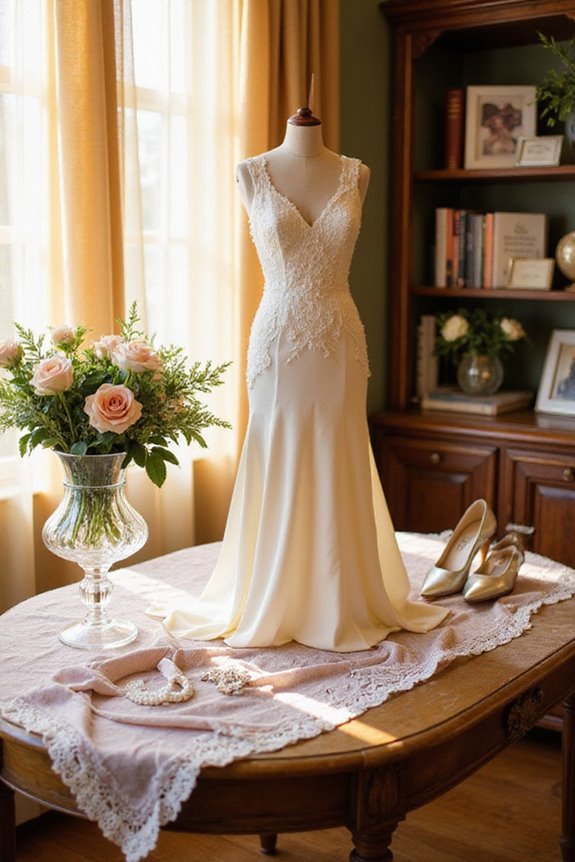Shopping secondhand successfully is all about strategy! First, we need to identify our personal style and set a budget—using cash can help us stick to it. Timing matters, too; visiting on weekdays gives us a better chance to find fresh items. Inspect for quality signs like good materials and avoid holes or stains. Patience is key; sometimes it takes time to find that perfect piece. Keep these tips in mind, and you’ll uncover amazing treasures! If you’re curious about more tips, stick around!
Key Takeaways
- Define your personal style and shopping goals to focus your secondhand search effectively.
- Set a budget and use cash or prepaid cards to avoid overspending during your thrifting trips.
- Time your visits for weekdays, especially early mornings, to access fresh inventory and avoid crowds.
- Inspect items carefully for quality, checking for stains, holes, and material composition before purchasing.
- Embrace the treasure hunt mentality; patience and persistence often lead to unique and high-quality finds.
Understanding the Secondhand Market Landscape
When we think about shopping secondhand, it’s easy to feel overwhelmed by the sheer size of the market and how quickly it’s growing. The global secondhand apparel market is projected to reach $367 billion by 2029! This boom is driven by shifting consumer behavior, with many of us looking for sustainable, affordable options. We might find ourselves drawn to vintage treasures or unique items that tell a story. But how do we navigate this vast landscape? First, we can embrace e-commerce platforms that make shopping secondhand easier than ever. Plus, we should stay informed about market trends that highlight popular categories. By understanding these dynamics, we can make smarter, more satisfying purchases while enjoying the thrill of the hunt!
Identifying Your Shopping Goals
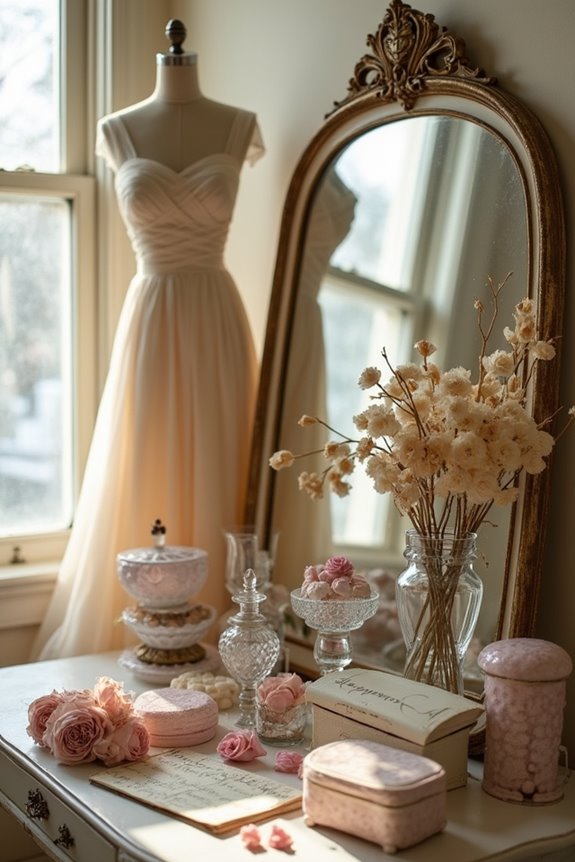
Identifying our shopping goals is an essential first step in making the most out of our secondhand adventures. First, let’s think about our personal style. Do we prefer casual, vintage, or something more eclectic? Knowing this helps narrow down our options. Next, we need to take into account our practical needs. Are we looking for staple wardrobe pieces, or maybe a unique statement item?
Listing gaps in our current wardrobe can keep us focused and avoid impulse buys. Remember, we can prioritize quality and uniqueness over cost to find that perfect piece. And don’t forget to differentiate between essentials and fun finds! Setting these goals guarantees we shop mindfully and enjoyably. Happy thrifting, friends!
Setting a Budget for Secondhand Purchases
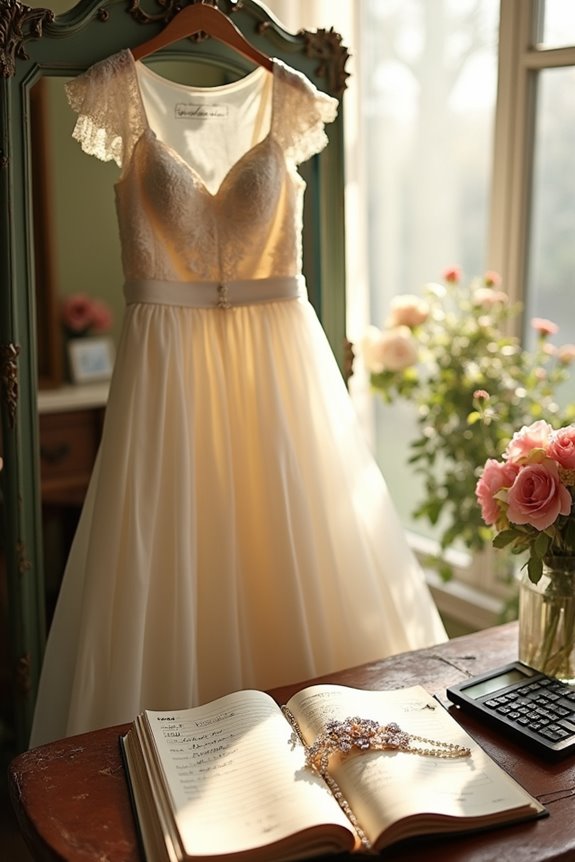
Setting a budget for our secondhand shopping adventures can feel a bit intimidating, but it doesn’t have to be! Here are some budgeting techniques to keep us on track. First, let’s define a maximum amount for each trip. Using cash or prepaid cards can help us stick to that limit. Next, prioritize essentials—those items we really need.
We should also keep an eye on quality. Allocating more funds for high-value items, like name brands, can save us money in the long run. Don’t forget to plan around sales or discounts to stretch our budget even further! Finally, let’s monitor our spending over time to adjust our budget according to our financial goals. Happy thrifting!
Choosing Between Online and In-Store Shopping
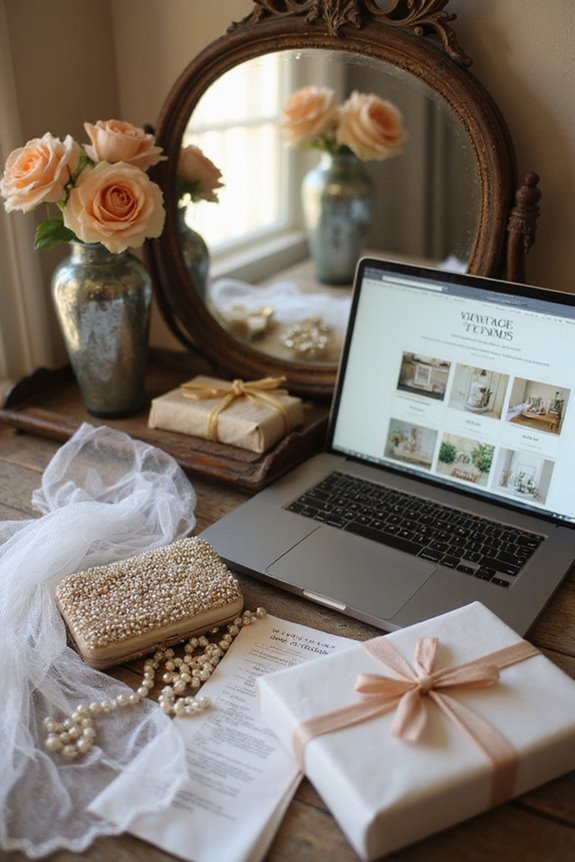
While we might think we grasp exactly how we want to shop secondhand, the choice between online and in-store can sometimes feel like a toss-up. In the US, many of us still prefer shopping in-store for that tactile experience. We can see and touch items, which helps avoid the dreaded “what if it’s not what I expected?” scenario. On the flip side, online shopping offers convenience and deals that can’t be ignored. Apps like Depop are perfect for those of us who want to browse from our couches. So, consider our shopping preferences carefully! If we want immediate satisfaction, hit the local thrift store. For deals and variety, let’s scroll through online options. It’s all about what fits our needs!
Timing Your Thrift Store Visits
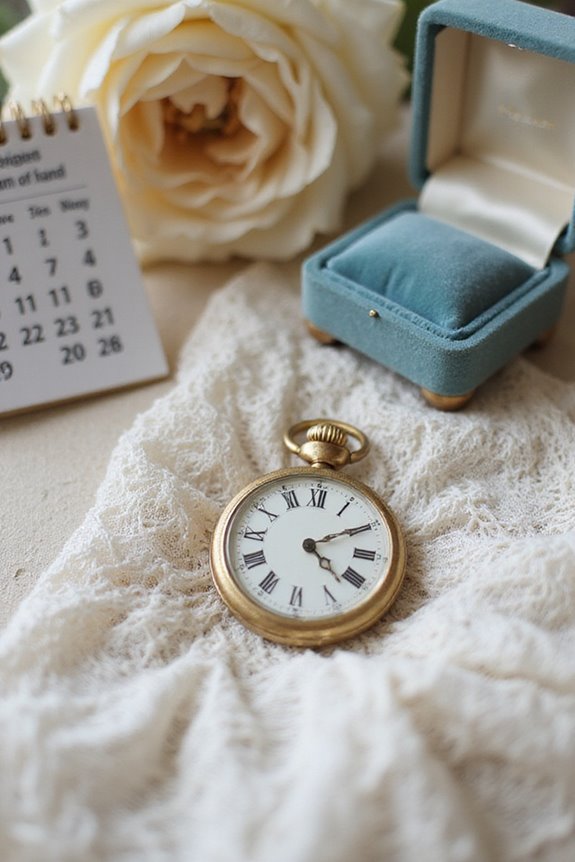
When it comes to thrift shopping, timing can make all the difference. To snag the best finds, let’s aim for weekday visits, especially Monday and Tuesday mornings. These are the ideal times when stores restock after weekend donations, giving us access to fresh inventory.
Weekends often bring crowds, making it tough to dig through clutter. If we want to avoid competition, let’s skip those busy Saturday afternoons!
Also, keep in mind that post-holiday periods, like after three-day weekends, can boost donations. So, timing our visits around these high donation times can lead to great discoveries. With a little planning, we can turn thrifting into a treasure hunt instead of a chaotic scramble!
Developing a Thrifting Strategy
Developing a successful thrifting strategy can feel like a treasure hunt, and we’re here to help you navigate it! First, let’s embrace a thrifting mindset. Instead of sticking to rigid shopping lists, let’s keep our minds open to unexpected finds. Think of thrift visits as exploration sessions; the more flexible we are, the more treasures we’ll uncover.
Next, we can use our smartphones to research local thrift stores and plan our visits. A little preparation goes a long way! Let’s dress practically so we can easily try on clothes. Finally, building relationships with store staff can lead to insider tips and potential discounts. Remember, patience is key, and who knows what gems await us? Happy thrifting!
Tips for Finding High-Quality Items
Finding high-quality items in secondhand shops can feel like searching for a needle in a haystack, but with a few handy tips, we can make this process much easier.
Inspect for Quality Indicators
Let’s check for stains, holes, and discoloration, especially in high-wear areas. If we find minor damages, we can use our repair skills to fix small tears.
Know Your Measurements
Bringing a tape measure is a game-changer! It helps us guarantee the fit is just right.
Research Brands
Familiarizing ourselves with trusted brands can save us from surprises.
Evaluate Materials
Natural fibers like cotton and wool are usually more durable. So, let’s prioritize those! Remember, shopping secondhand is all about patience and a little luck!
Resale Value Considerations
As we explore the world of secondhand shopping, it’s essential to think about resale value—after all, we want our finds to be more than just wardrobe fillers! Resale trends show that younger shoppers, like Millennials and Gen Z, are considering the investment potential of their purchases. When we buy high-quality, designer items, we’re not just saving money; we’re making smart choices that could pay off later.
To maximize resale value, we should focus on items in excellent condition and from reputable brands. Timing is everything too; selling winter clothes in the fall can boost interest. By keeping these factors in mind, we can enjoy our secondhand treasures while also thinking ahead about their future worth!
Maintaining Patience and Persistence
While we plunge into the world of secondhand shopping, it’s important to remember that patience and persistence are our best friends. First, let’s embrace patience practices by dedicating time—think 30 minutes to two hours—when we browse. This time investment boosts our chances of finding hidden gems. Next, we can use persistence techniques by visiting our favorite shops regularly and keeping an eye on online platforms. Remember, patience is essential since stock changes constantly, and we might not find what we want immediately. We should accept the occasional miss as part of the journey. Celebrate those small victories, like snagging that perfect vintage jacket. With our combined efforts, we’ll discover amazing secondhand treasures while keeping our enthusiasm alive!
Building a Sustainable Wardrobe With Secondhand Finds
When we think about creating a sustainable wardrobe, the journey often starts with understanding what we already own. We can sort our clothes by type and frequency of use. This helps us see what we need. Let’s focus on versatile pieces, like a classic denim jacket or a little black dress, which can be worn in many ways.
When shopping secondhand, we should seek out high-quality items made from eco-friendly fabrics, like organic cotton or linen. Always check for sustainable brands with ethical practices. Remember, buying secondhand isn’t just about filling gaps; it’s about embracing unique finds while reducing waste. So, let’s mix and match those treasures, and turn our closets into sustainability champions!
Frequently Asked Questions
How Can I Find the Best Thrift Stores in My Area?
As we begin our treasure hunt, let’s tap into local recommendations and thrift store apps. They’re like our compass, guiding us to hidden gems waiting in our community’s thrift shops. Happy hunting!
What Types of Items Are Most Commonly Found Secondhand?
When we explore secondhand shopping, we often discover vintage clothing treasures and unique furniture finds. These items not only add character to our wardrobes and homes but also promote sustainable consumption. Let’s immerse ourselves in this rewarding experience together!
Are There Specific Brands That Are Better for Resale Value?
Absolutely, some brands like Louis Vuitton and Nike are known for their strong resale value. By understanding brand popularity and resale trends, we can make smarter choices that maximize our profit when reselling secondhand items.
How Do I Clean and Care for Secondhand Clothing?
We’ve all wondered how to properly care for secondhand clothes. With effective laundry tips and mindful fabric care, we can guarantee our vintage finds stay fresh and vibrant while lasting for years to come.
What Should I Avoid When Shopping for Secondhand Items?
When we shop secondhand, we should avoid impulsive buys and check for quality concerns. Let’s inspect items carefully for hidden damages, ensuring we choose pieces that truly fit our style and needs.

